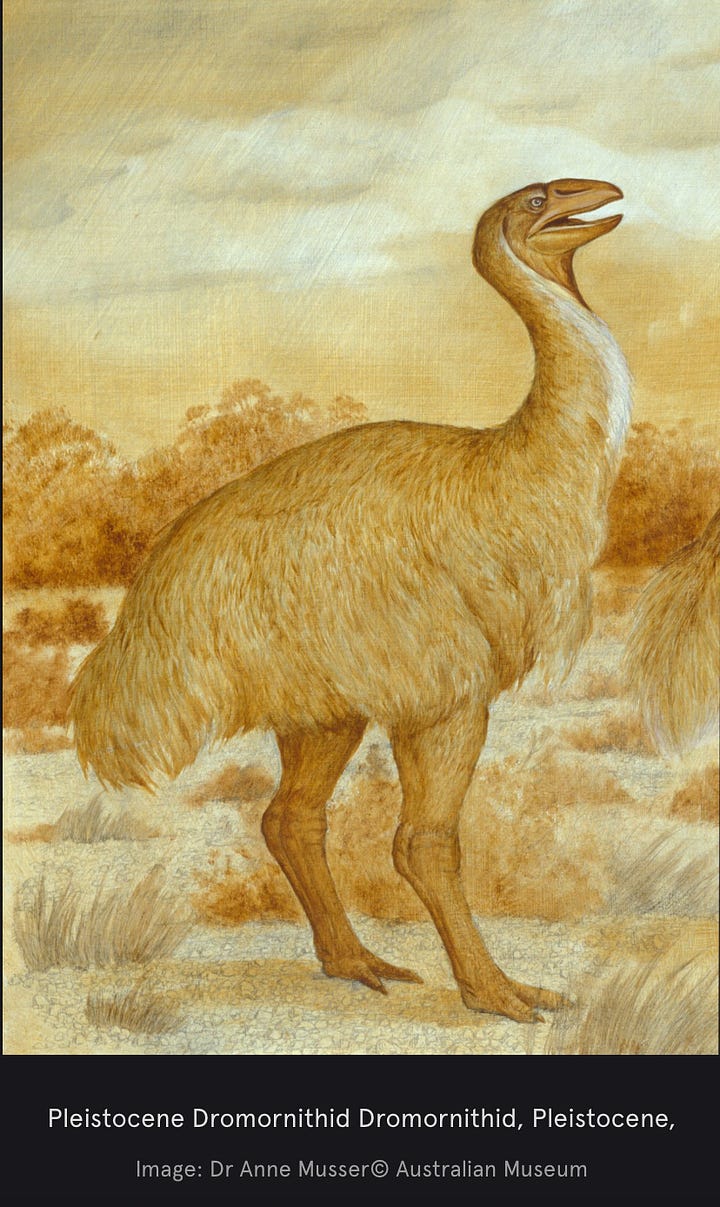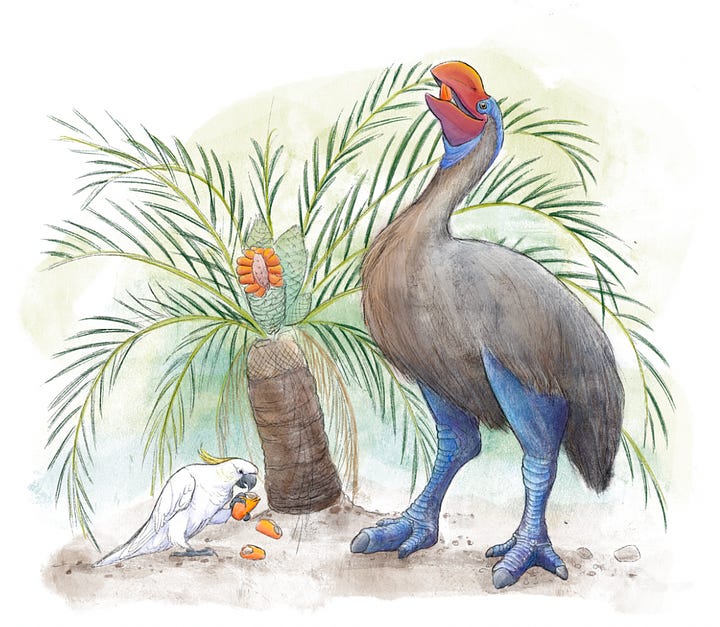Megafauna literally means ‘big animals’, animals with body mass of at least 40kg. People might think of Ice Age; sabre-toothed tigers and wooly mammoths, but did you know that equally impressive giant animals lived in Australia during that time.
After the dinosaurs died out (65 million years ago), many of the remaining birds, reptiles and mammals slowly grew in size until the Quaternary Period (the last 2.5 million years ago) they were pretty majorly massive!
Australia’s Quaternary megafauna were pretty awesome. Imagine giant wombat-like creatures (Diprotodon), marsupial ‘lions’ (Thylacoleo), 2 metre tall goose-like ‘thunderbirds’ (Genyornis) and dragon-sized lizards (Megalania) roaming the land. Not all megafauna are actually extinct today, the crocodile and the giant red kangaroo (who has just recently had an ancestor found that is 2x the size of the current one) are living relatives of the megafauna.
In today’s class, we’ll focus on drawing on or more of these awesome animals potentially with a little version of you to show some scale. Start by learning a bit more about these animals and observing the shapes that make up their bodies.
Diprotodon
The biggest marsupial ever to have lived and the last to die out.
Lived alongside indigenous peoples and became extinct 25,000 years ago.
Large forward-facing incisors giving the face a protruding look.
Surprisingly small feet for its size.
Up to 4-metres long and 2800kg in weight - actually considerably lighter than a hippo (4500kg).




Thylacoleo
The largest carnivorous marsupial known to have ever existed.
May have hunted Diprotodon.
Big slicing cheek teeth and large stabbing incisor teeth, strongest ‘bite-strength’ of any other mammal (living or extinct).
Likely was an ambush predator and there is speculation that it may have sat in trees and dropped down on its prey (an actual drop-bear)!




Genyornis
Last of the large flightless mihirungs (thunder birds) endemic to Australia.
There are many depictions of these birds in cave paintings, suggesting that humans likely lived alongside them for at least 15,000 years.
2 meters tall with massive hind legs and hoof-like toes. Weighed up to 240kg.
Wedge-shaped head likely similar to a giant magpie-goose.
Appears to have been a herbivore (lacking solid evidence).




As these animals lived such a long time ago, there is no actual certainty on colour or pattern of their fur/feathers/scales. Why not be a bit inventive when drawing your animal? Maybe you could add pink polka-dots or interesting floral patterns? There is no wrong! Also, think about where you might fit into the picture with your animal. Are you going for a ride, saying hello or running away for dear life?! Here’s my take on the Thylacoleo, feel free to print it out and colour it in. 😊





